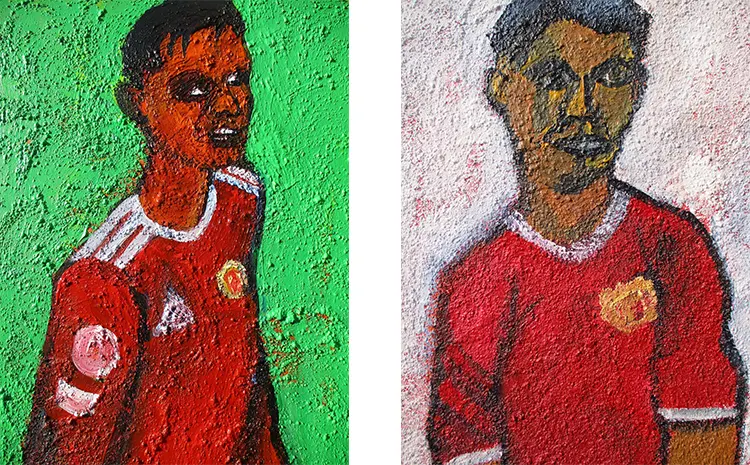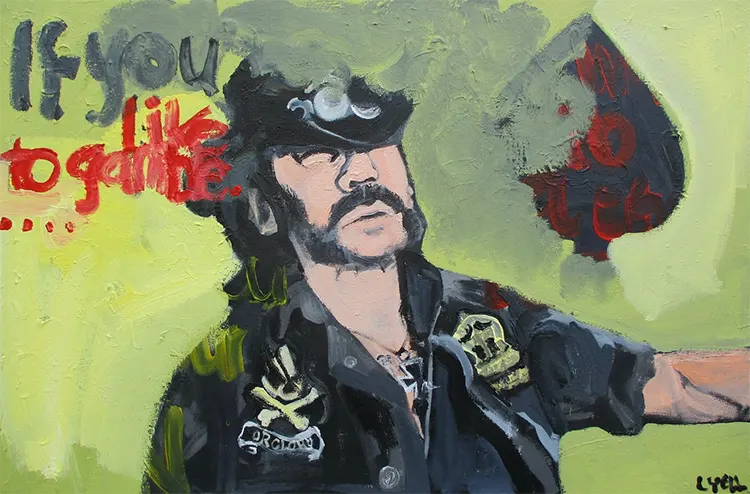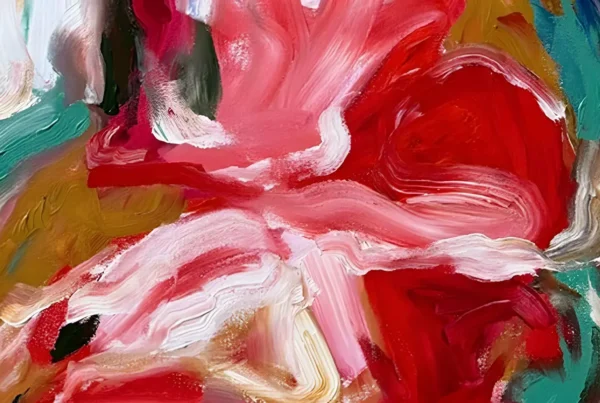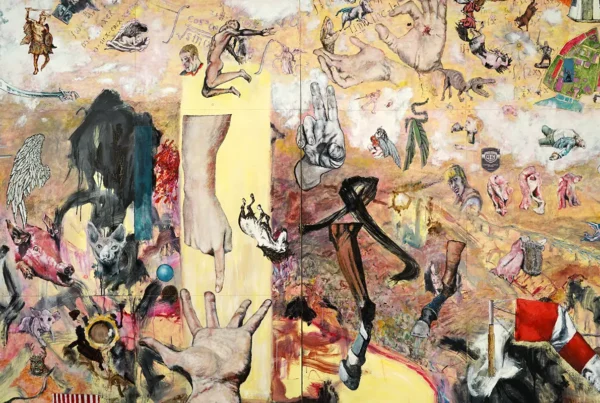“It’s not just what I paint but how I paint it; the textures I create give each work its uniqueness.”
Early Life and Influences: The Formative Years of Douglas Lyell
Douglas Lyell was born in the historic town of Wakefield, Yorkshire. His early years were marked by a modest upbringing in the suburbs of West London. His father, dedicated to serving the community, held a position as a building surveyor for the local council. Despite the challenges presented by their limited accommodations during his formative years, Lyell’s innate passion for art remained undeterred.
During his academic journey, Lyell was continually drawn to artistic pursuits. In the mid-eighties, a serendipitous residence in Tottenham placed him in close proximity to an affiliate of the Middlesex Polytechnic fine art department. This establishment teemed with “situationists”, whose innovative approaches and philosophies left an indelible mark on him. Such geographical closeness provided Lyell with an avenue to deeply explore the art world. He immersed himself in the writings and correspondences of Van Gogh, delved into the nuances of post-impressionists, and became captivated by the works of Dostoyevsky and the era of La Belle Epoque. Throughout this period of exploration, he often felt the resonance of a Victorian gentleman within his soul.

A Master of Mediums: The Versatile Artistic Ethos of Douglas Lyell
Having pursued Art at the university level, Douglas Lyell initially gravitated towards acrylics due to their advantage over oils in terms of convenience. Yet, as his expertise grew, Lyell skillfully replicated the nuances and effects typical of his oil paintings using this medium. In the realm of materials, he showcases remarkable versatility. Although he predominantly employs acrylic, citing its unparalleled flexibility and vast untapped potential, Lyell does not confine himself to a single medium. For a time, he salvaged objects bound for discard, later transforming and featuring them in art galleries.
Lyell’s artistic ethos resonates with post-modern sensibilities. Each creation he conceives bears profound personal significance. It is not merely the subject matter, but also the distinctive manner in which he renders them that stands out. He adeptly employs a rich tapestry of textures in his oeuvre, bestowing upon each work an individualized essence. This mastery in texturing sets him apart. Lyell’s overarching ambition is to introduce innovative compositions, the likes of which galleries may not have previously encountered. He is deeply intrigued by the subconscious depths, the fortuitous interplay of chance, and the beauty of human imperfections.

From Jazz to Hawkwind: The Musical Threads in Lyell’s Paintings
The traditions embedded in Greenbergian abstraction profoundly shape Douglas Lyell’s artistic endeavors, serving as a unifying thread that weaves through the tapestry of art across generations. Moreover, the free jazz movement of the 1960s significantly informs Lyell’s works. Though Lyell sometimes contemplates fully immersing himself in the realm of abstraction, his profound regard for social and political issues compels him towards figurative painting.
Lyell often finds that the artwork which resonates most profoundly is his most recent piece. Currently, this is a depiction of the iconic band, “Hawkwind”. Experiencing a Hawkwind concert for the first time in 1978 proved to be a pivotal moment in his life. His painting, while inspired by a photograph from the band’s early seventies phase, has been meticulously adapted by the artist to ensure a harmonious composition. Hawkwind’s influence during Lyell’s formative years is undeniable, with their music from the seventies and Barney Bubbles’ iconic album cover designs continuing to captivate him. He discerns a striking congruence between the contemporary era and the spirit of the seventies.

In the Studio and Beyond: Envisioning Monuments from Salvaged Cars
Douglas Lyell’s studio essentials are deceptively simple, consisting of a chair, a low table, a water bucket, a sponge, and a generous supply of paint. Rather than rebuffing distractions, Lyell seamlessly integrates them into his creative process, aligning himself with the philosophy of Milton Erickson, the distinguished hypnotherapist.
In terms of future aspirations, Lyell is drawn to the idea of crafting monumental sculptures from salvaged cars acquired from scrapyards, drenched in brilliant colors. These proposed masterpieces are envisioned to be vast, constructed from a multitude of damaged vehicles.






